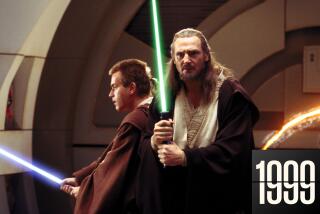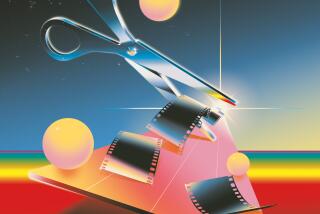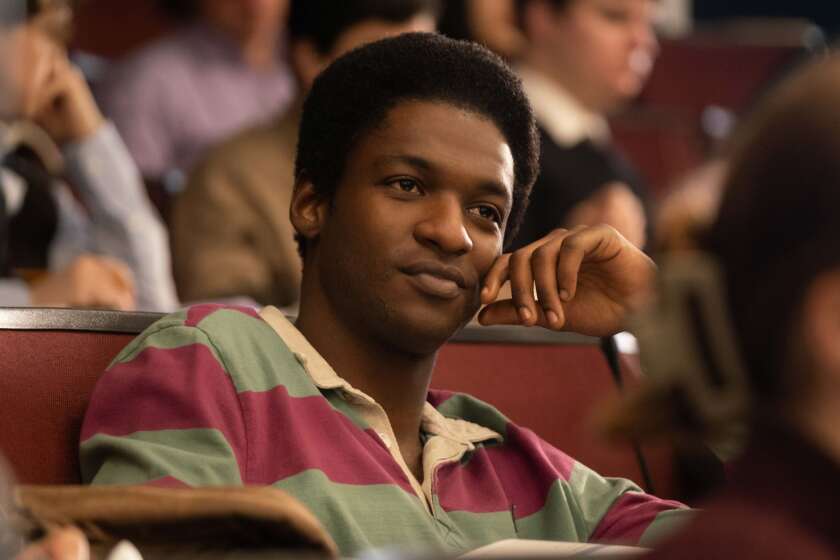Review: ‘Making Waves’ reveals the sound secrets behind ‘Star Wars,’ ‘Apocalypse Now’ and more classic films
When it’s done right, sound in film doesn’t call attention to itself, it just comes off as perfectly natural.
When Chewbacca speaks in the “Star Wars” saga, for instance, he sounds the way a Wookie should, end of story. Few people realize that his voice was carefully constructed by sound designer Ben Burtt out of, among many other things, a young bear hungering for a crust of bread.
“Film sound,” says Burtt in the irresistible documentary “Making Waves: The Art of Cinematic Sound,” “is an illusory art,” while Gary Rydstrom describes it as “stealthy, flying under the radar.”
Midge Costin, the film’s director, knows this world inside out. She’s been a working Hollywood sound editor for 25 years and is also the Kay Rose Chair in the Art of Sound Editing at USC’s film school.
Though she’s a first-time director, Costin has put together a film that’s a savvy cinematic education as well as pure fun. If you care about the movies, don’t even think of staying away.
Costin’s respect and status in the industry is reflected by the number of top filmmakers she’s gotten to talk about importance of sound in their work, including David Lynch, Ryan Coogler, Christopher Nolan, Barbra Streisand and George Lucas.
Here, for instance, is Spielberg saying “Our ears lead our eyes to where the story is,” followed by an analysis of how the sound mix in “Saving Private Ryan” came together. “There’s always a rhythm,” Rydstrom explains, “even to chaos.”
Though hearing from big name directors is fun, the film’s most compelling figures are the three titans of modern sound design, namely Burtt, Rydstrom and the godfather of the art, Walter Murch, whose work on “The Godfather” includes at one point using the screeching sound of a subway to indicate Michael Corleone’s disturbed state of mind.
In addition to providing mini-biographies of this trio, “Making Waves” provides a history of sound on film, informing us of early heroes like Murray Spivack, who did the sound design for “King Kong” and went on to win an Oscar for “Hello, Dolly” decades later.
A nod is given to Orson Welles, whose experience in radio helped to revolutionize film sound, and to Jack Foley, the original foley artist who pioneered the art of using everyday objects to reproduce on-screen sound.
It was Foley, for instance, who convinced Stanley Kubrick that he could use jangling car keys to create the sound of clanking Roman armor on “Spartacus” and save the expense of an on-location reshoot.
Though “Making Waves” excels at breaking down the multiple parts of a soundtrack, the film’s many anecdotes are ultimately its most engaging feature.
We learn that 100 Farsi-speaking extras on the Warner Bros. Studios New York street created the sounds for the entire siege of the American Embassy in “Argo” and that the addition of wild animal noises made the jet engines in “Top Gun” sound particularly fierce.
“I pinch myself every day,” one sound editor says, underlining how fortunate she feels to have such a magical job. Those who make the effort to see this fascinating film will feel their time has been equally well spent.
'Making Waves'
Not rated
Running time: 1 hour, 34 minutes
Playing: Laemmle Monica, Santa Monica; Arclight Hollywood
More to Read
Only good movies
Get the Indie Focus newsletter, Mark Olsen's weekly guide to the world of cinema.
You may occasionally receive promotional content from the Los Angeles Times.











